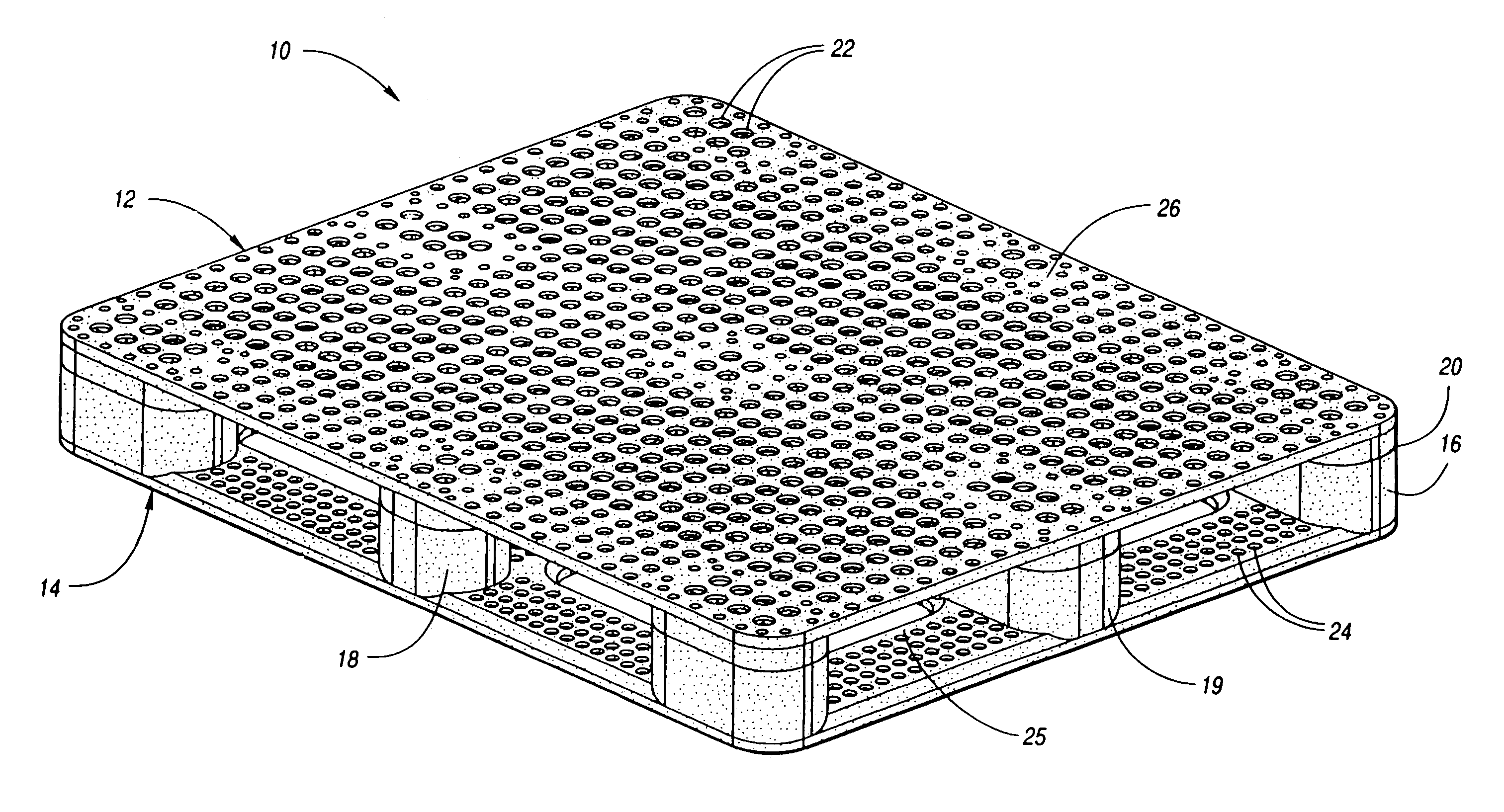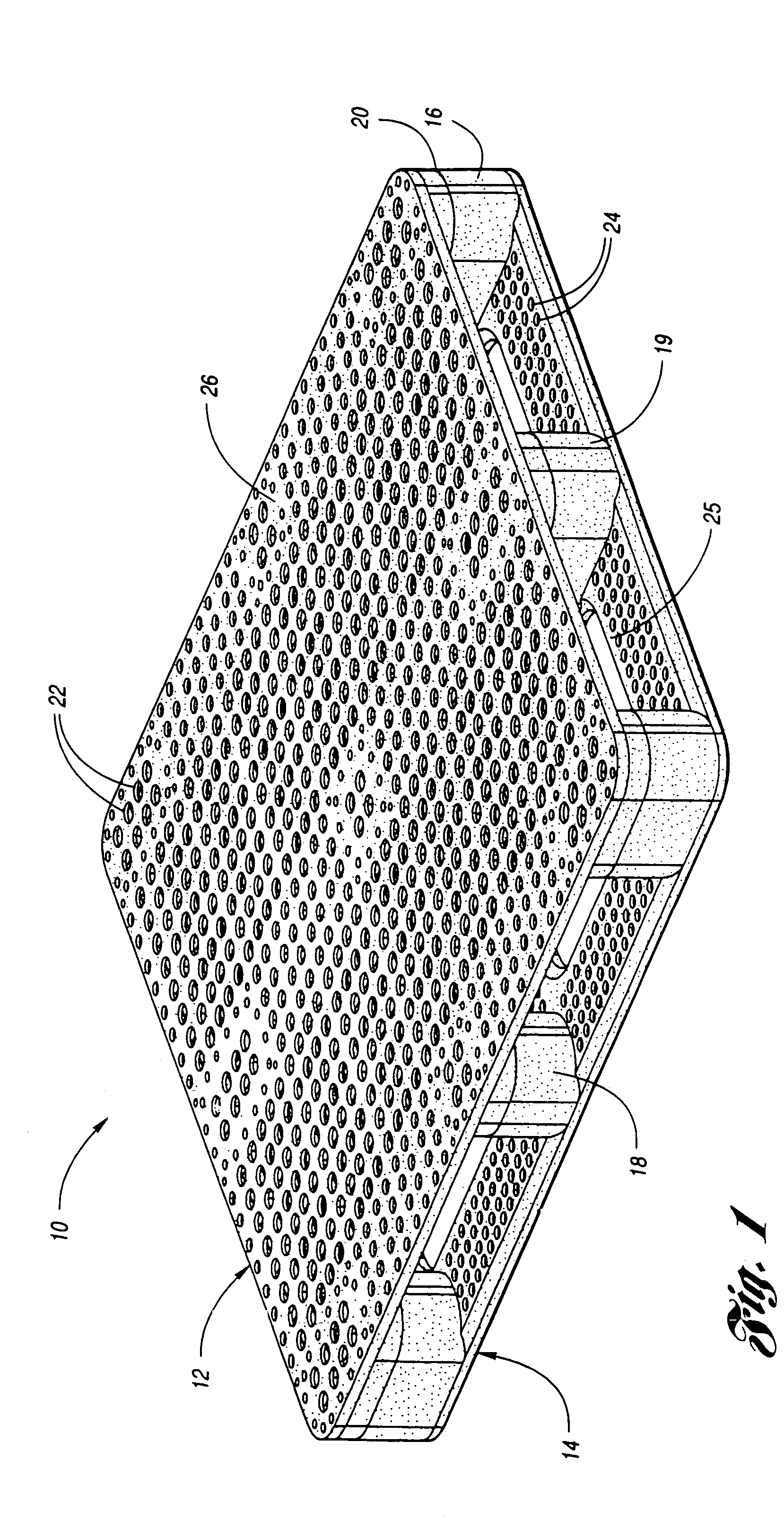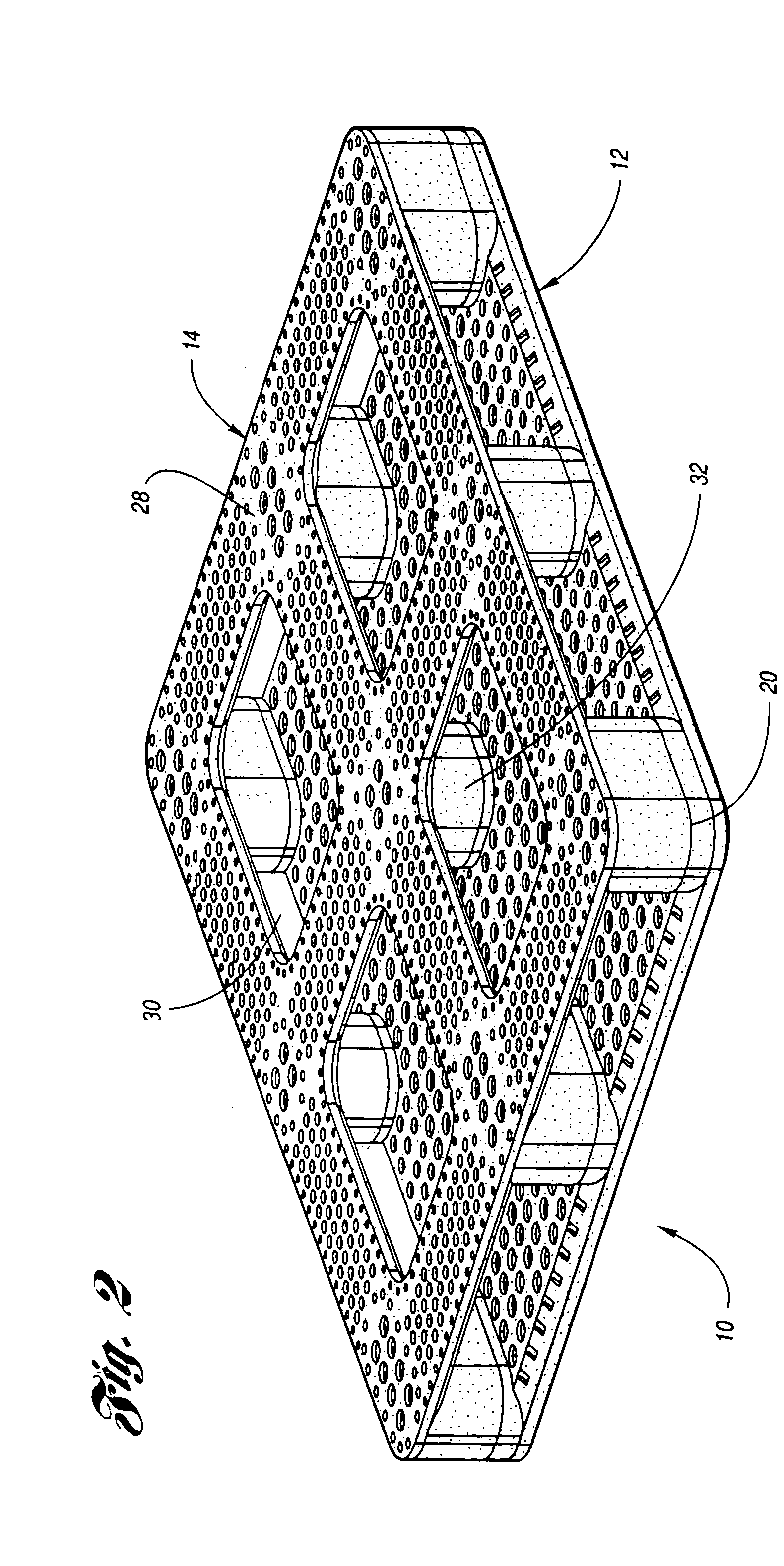Pallet assembly
a pallet and assembly technology, applied in the field of pallet assembly, can solve the problems of warping of wood, difficult cleaning of wood, and relatively heavy wood pallets, and achieve the effect of uniform dimensioning, low manufacturing cost and convenient assembly
- Summary
- Abstract
- Description
- Claims
- Application Information
AI Technical Summary
Benefits of technology
Problems solved by technology
Method used
Image
Examples
Embodiment Construction
[0070]FIG. 1 of the drawings shows a top perspective view of a pallet assembly 10 according to the present invention. Pallet assembly 10 is formed of a thermoplastic or other polymeric material and is preferably, but not necessarily, formed of injection molded components. As illustrated in FIG. 1, pallet assembly 10 includes a top deck 12 and a bottom deck 14 which are spaced apart from each other. Pallet assembly 10 also includes a plurality of columns which extend between the spaced apart top deck 12 and bottom deck 14. The pluralities of columns include corner column portions 16, side column portions 18, and end column portions 19 shown extending between top deck 12 and bottom deck 14. The columns are shown having smooth, rounded outer surfaces in order to prevent damage from fork lift trucks and the like. However, any suitable contour may be used depending on the application. In addition to separating top deck 12 and bottom deck 14, column portions 16, 18, 19 and 32 serve to bea...
PUM
| Property | Measurement | Unit |
|---|---|---|
| wavelengths | aaaaa | aaaaa |
| size | aaaaa | aaaaa |
| shrinkage | aaaaa | aaaaa |
Abstract
Description
Claims
Application Information
 Login to view more
Login to view more - R&D Engineer
- R&D Manager
- IP Professional
- Industry Leading Data Capabilities
- Powerful AI technology
- Patent DNA Extraction
Browse by: Latest US Patents, China's latest patents, Technical Efficacy Thesaurus, Application Domain, Technology Topic.
© 2024 PatSnap. All rights reserved.Legal|Privacy policy|Modern Slavery Act Transparency Statement|Sitemap



